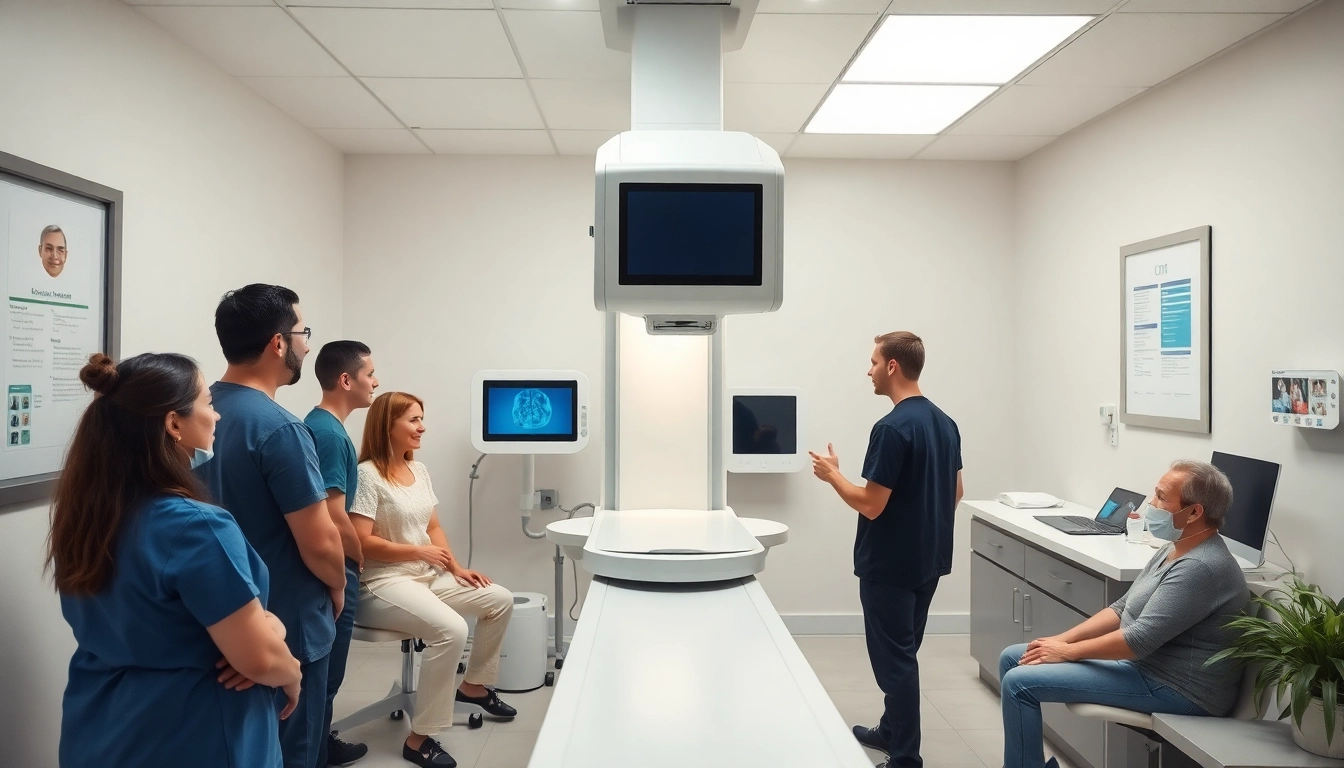Understanding the Importance of X-ray Machines in Small Clinics
X-ray machines play a crucial role in modern medicine, offering invaluable assistance in the diagnosis and treatment of various health conditions. For small clinics, having access to reliable and efficient X-ray technology is essential not only for enhancing patient care but also for the clinic’s overall effectiveness. The acquisition of the best X-ray machine for small clinics can significantly improve diagnostic capabilities, streamline workflow, and ultimately lead to better patient outcomes. This comprehensive guide addresses the significance of X-ray technology in small healthcare practices, explores key features to consider when selecting equipment, compares top models, and discusses maintenance and future trends.
Benefits of X-ray Technology in Patient Care
The introduction of X-ray technology has revolutionized patient care in the healthcare industry. Small clinics can now provide enhanced services by using X-ray machines to detect and evaluate various medical conditions quickly. The benefits include:
- Rapid Diagnosis: X-rays permit swift evaluation of conditions such as fractures, infections, and tumors, aiding in quicker treatment decisions.
- Minimally Invasive: X-ray imaging requires no invasive procedures, making it a highly patient-friendly option for diagnostic purposes.
- Patient Education: X-ray images provide visual evidence, assisting health professionals in explaining medical conditions and treatment plans effectively to patients.
How X-ray Machines Enhance Diagnosis Accuracy
Accurate diagnosis is paramount for effective healthcare delivery. High-quality X-ray images facilitate better analysis of the patient’s condition, leading to precise and timely interventions. Factors that enhance diagnostic accuracy include:
- Image Clarity: Advanced digital X-ray machines deliver superior resolution, allowing clinicians to discern subtle abnormalities that may go unnoticed with lower-quality imaging.
- Multi-Dimensional Imaging: New technologies allow for three-dimensional reconstructions, offering a more comprehensive view of complex structures.
- Integration with Health Records: Many modern X-ray machines can directly integrate with electronic health records (EHRs), streamlining information sharing and reducing the likelihood of errors.
Cost-Effectiveness for Small Healthcare Practices
Investing in X-ray technology can seem daunting, especially for small clinics with tight budgets. However, the cost-effectiveness of modern X-ray systems can significantly outweigh their initial investment:
- Reduced Referral Costs: By performing X-rays in-house, clinics save on referral fees to larger facilities.
- Improved Patient Throughput: Fast and efficient imaging allows for quicker patient turnover, ultimately leading to increased revenue.
- Long-Term Savings: Investing in reliable, high-tech machines can reduce long-term maintenance costs and enhance operational efficiency.
Key Features to Look for in the Best X-ray Machines for Small Clinics
The choice of an X-ray machine requires careful consideration of various features that align with the specific needs of a small clinic. Here are the essential features to evaluate:
Size and Space Requirements: Finding the Right Fit
Small clinics often face space constraints, making it crucial to select an X-ray machine that fits within the designated area without compromising operational workflow. Factors to consider include:
- Compact Design: Look for machines that are designed to maximize space efficiency while maintaining functionality.
- Flexible Installation Options: Machines that offer ceiling-mounted or mobile configurations can help optimize room layout.
Imaging Quality: Importance of High Resolution
The quality of imaging directly impacts diagnosis efficiency. High-resolution images allow for better analysis and treatment planning. Key attributes of imaging quality include:
- Detector Technology: Digital detectors provide higher detail and reduce exposure times, ensuring a clear image with minimal radiation.
- Dynamic Range: A broader dynamic range allows for the capture of varying densities in tissues, leading to better image interpretation.
Portability Options for Small Clinics
Some clinics may need X-ray machines that can be readily moved from one location to another. Portable X-ray machines offer the flexibility needed in various settings. Considerations include:
- Weight and Size: Lightweight machines that are easy to maneuver can enhance usability in small spaces.
- Battery-Powered Options: Cordless units allow use in areas without direct access to power sources.
Comparing the Best X-ray Machines for Small Clinics
With numerous models available, selecting the right X-ray machine for a small clinic can seem overwhelming. Here, we will review prominent models and their unique features, as well as provide budget considerations and insights from users.
Top Models Reviewed and Their Unique Features
When evaluating X-ray machines, it can be helpful to consider some of the most popular options available on the market:
- Siemens Mobilett Mira: Known for its excellent image quality and portability, this model is ideal for practices requiring on-the-go imaging.
- Canon RadPRO 1K: Offers high-resolution imaging and low-dose exposure, making it a fit for clinics prioritizing safety and efficacy.
- GE Optima XR220amx: This versatile machine provides superb imaging capabilities along with a user-friendly interface.
Price Comparison and Budget Considerations
Budgeting for an X-ray machine is crucial. Prices can vary widely based on the type, features, and brand. Here are some price considerations for small clinics:
- Initial Purchase Prices: Expect to pay anywhere from $30,000 to over $100,000 for high-quality units.
- Financing Options: Many manufacturers and financial institutions offer leasing or installment plans, aiding cash flow for small practices.
- Ongoing Costs: Factor in maintenance, service contracts, and ongoing supply costs when budgeting for an X-ray machine.
User Feedback and Performance Ratings
User experiences can provide invaluable insights into the real-world performance of X-ray machines. Feedback often highlights:
- Ease of Use: Clinicians appreciate machines with intuitive controls that minimize training time.
- Reliability: Positive reviews frequently emphasize how critical it is for machines to deliver consistent and reliable imaging.
- Customer Support: Responsive customer service is essential, with users often highlighting effective support during issues or maintenance needs.
Best Practices for Installing and Maintaining X-ray Equipment
The efficient installation and maintenance of X-ray equipment are essential for ensuring its longevity and performance. Here are recommended practices:
Installation Tips for Small Clinic Environments
Proper installation is key to maximizing the benefits of an X-ray machine. Consider these tips:
- Consult Professionals: Engage qualified technicians for installation to ensure compliance with safety standards and optimal functionality.
- Space Optimization: Design the layout to provide adequate space around the machine for ease of access and workflow.
Routine Maintenance Requirements and Schedule
Following a structured maintenance routine can help prevent issues and prolong the lifespan of X-ray machines. Suggestions include:
- Regular Calibration: Schedule periodic calibrations and inspections to ensure the machine operates within specified limits.
- Cleaning Protocols: Establish cleaning routines to maintain hygiene and performance, particularly for sensitive components like film cassettes and detectors.
Legal Compliance and Safety Standards for X-ray Use
Compliance with legal and safety standards is non-negotiable in operating X-ray equipment. Small clinics should ensure adherence to:
- Radiation Safety Regulations: Understand and implement local and national regulations governing radiation exposure and patient safety.
- Staff Training: Regularly train staff on safety protocols and operational guidelines to maintain a safe environment for both patients and personnel.
Future Trends in X-ray Technology for Small Clinics
The field of X-ray technology is rapidly evolving, with new advancements that can positively impact the operations of small clinics. Exploring future trends is essential for staying competitive:
Emerging Technologies in X-ray Imaging
Innovations are continuously being integrated into X-ray machines, such as:
- Artificial Intelligence: AI is increasingly being utilized to aid radiologists by providing enhanced image analysis and diagnostic suggestions.
- 3D Imaging: This technology provides a deeper insight into patient conditions, especially useful in dental and orthopedic practices.
Sustainability in Medical Imaging Solutions
Sustainability is becoming a growing concern in healthcare. Clinics should consider environmentally friendly practices, including:
- Energy-Efficient Equipment: Invest in machines that consume less power while maintaining performance standards.
- Recyclable Materials: Use recyclable or sustainable materials in disposables and other supplies whenever possible.
How to Prepare for Future Advances in X-ray Technology
Staying ahead in the rapidly changing field of medical imaging requires proactive planning. Clinics can prepare by:
- Investing in Training: Continuous education for staff members on emerging technologies ensures they remain adept and knowledgeable.
- Building Flexible Systems: Opt for modular systems that can be easily upgraded as technology advances, allowing cost-effective adaptations without requiring complete replacements.



